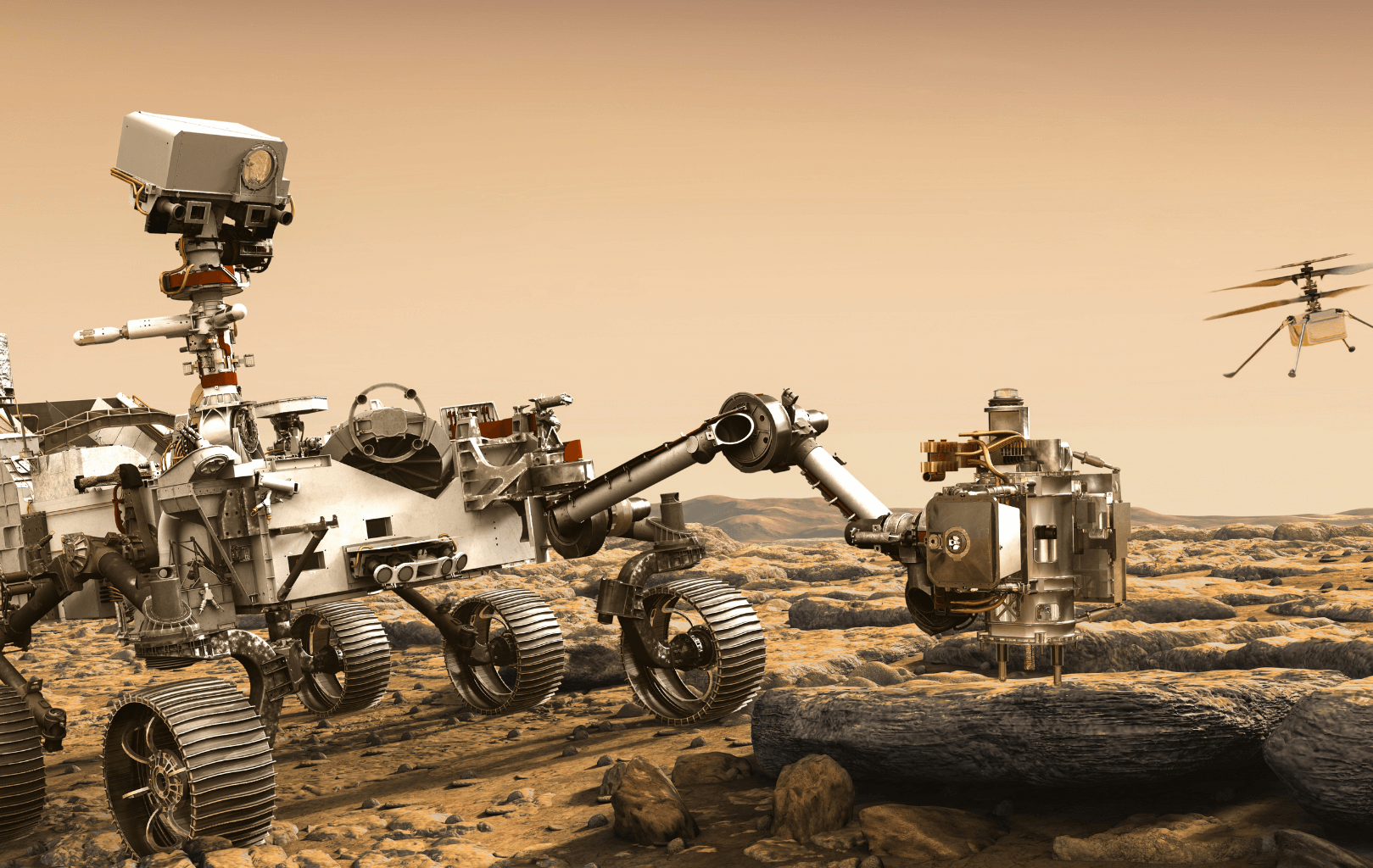It seems the list of “firsts” for NASA’s Perseverance rover keeps scooping up more and more achievements. After its Ingenuity helicopter initiated the first-ever controlled, powered flight of an aircraft on another planet, its on-board Mars Oxygen In-Situ Resource Utilization Experiment, or MOXIE for short, succeeds in generating oxygen from the red planet’s thin, carbon dioxide-rich (CO2-rich) atmosphere. The milestone presents tantalizing opportunities for future manned missions to the red planet.
MOXIE is a small, oven toaster-sized instrument located atop Perseverance, responsible for testing the feasibility of generating oxygen from all the carbon dioxide in the Martian air by splitting CO2 into its atomic components, and getting oxygen while releasing carbon monoxide (CO) into the Martian atmosphere as a waste product.
Around only 5 grams of O2 were generated on this first run—just enough for around 10 minutes of breathable air for an average astronaut. The entire instrument itself was designed to generate up to 10 grams, so more adjustments and optimization are needed. In its entirety, the technology demonstration showed that such a device can survive takeoff from Earth, interplanetary travel for 7 months, then a subsequent descent and landing into Mars. MOXIE itself is planned to extract oxygen 9 more times within the span of the Martian year beginning with its first run, which is around 2 Earth years. Overall, the device will go through three phases of testing: first, to check out and characterize its function after landing; second, to run the instrument in varying atmospheric conditions, such as during Martian days and nights, or different Martian seasons; and third, further testing while trying new operation modes, such as differences in temperature.
The Why
Getting a space vessel to escape velocity and out of Earth’s gravitational embrace requires a lot of fuel—fuel that that very rocket must bring with itself. And to bring all that fuel, plus all the tanks that must contain it, a rocket needs that much more thrust to carry all that additional weight, which now requires more fuel—and the cycle continues ad infinitum. Space-faring vessels must then take into account the weight of its payload into account before takeoff. It’s for this reason that spaceships jettison their fuel tanks during the launch sequence once they’re emptied.
Now, any manned mission to Mars must bring with it all the essentials: food, water, and all the instruments and tools required for the mission, including all the oxygen the astronauts will be breathing in for the entirety of the trip there. It would be unfeasible to, say, just attach tons of food or water to the spacecraft, as this would add more unremovable weight to a spaceship during takeoff. It would be more economical, then, to instead equip our astronauts with just enough food, water, and other essentials to make the trip to their destination (such as Mars), and simply give them the tools they need to make their own food, water, and oxygen instead. MOXIE’s goal is to address oxygen generation in this manner: to skip bringing tons of oxygen tanks along with the trip, and simply use the resources already available on Mars instead.
According to Trudy Kortes, director of technology demonstrations at NASA’s Space Technology Mission DIrectorate (STMD), MOXIE won’t just be the first instrument to produce oxygen on another planet; it’s also the first technology of its kind that will help future manned missions “live off the land” through using another planet’s resources—a process called in-situ resource utilization.
“It’s taking regolith (the layer of roughly loose rocky material covering bedrock) […] and putting it through a processing plant, making it into a large structure, or taking carbon dioxide – the bulk of the atmosphere – and converting it into oxygen. […] This process allows us to convert these abundant materials into usable things: propellant, breathable air, or, combined with hydrogen, water.”
Bibliography
- NASA/JPL. (2021, April 22). NASA’s Perseverance Mars Rover Extracts First Oxygen from Red Planet. NASA. Retrieved April 22, 2021, from https://www.nasa.gov/press-release/nasa-s-perseverance-mars-rover-extracts-first-oxygen-from-red-planet











